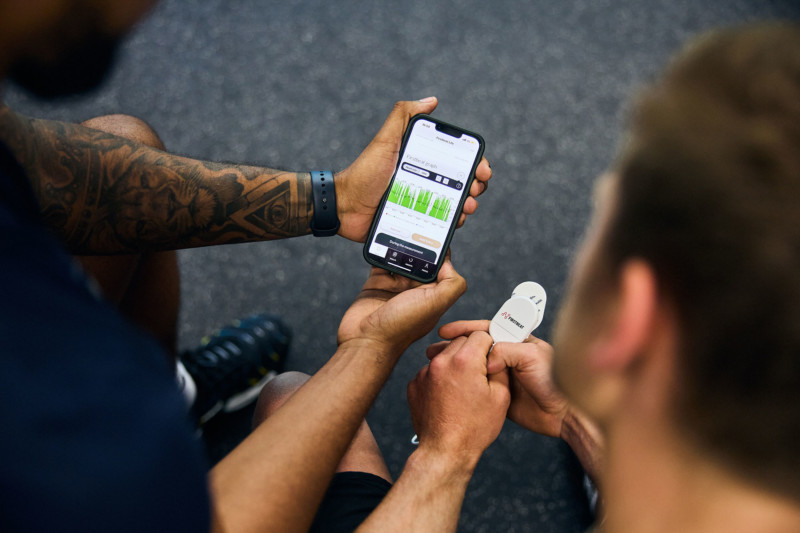
Accurate physiological data allows you to understand what is really going on in a client’s life and reveals the effects of their daily choices on their overall well-being. It can also help you to make better coaching decisions, create meaningful dialogue, and deepen and lengthen your client relationships.
In this article, we’ll take a look at some practical examples of the kinds of insights that physiological data can provide so you can begin to understand the value of using a professional platform like Firstbeat Life to measure data on stress, recovery, sleep, and exercise. We’ll also cite real-life cases and examples that our long-term partner Simon Shepard shared with us during a recent webinar.
Stress and Recovery
Discover an individual’s stress and recovery triggers to boost well-being and performance.
We all go through stressful periods in life where we experience some kind of unexpected change or disruption to our daily routines. It could be a divorce, a new baby, the death of a family member, or even a new job. During these turbulent times, it’s important to monitor stress and recovery levels to check how someone is coping.
If Firstbeat data shows that there are not enough recovery moments in somebody’s day, you can test how different activities or adjustments to someone’s routine affect their stress and recovery balance. For example, what would happen if you allocated time in someone’s day for a walk outside, or activities like yoga and meditation?
You can also help to restructure somebody’s workday to include more opportunities for recovery – like a 10-minute microbreak between meetings or a 20-minute power nap, and see how it would affect their overall stress-recovery balance.
Real Case Examples:
Firstbeat Life partner Simon Shepard highlighted a couple of unique cases where clients’ stress and recovery data led to some major life decisions around career choices.
In one case, a junior doctor at a crossroads in their career utilized Firstbeat’s data to see how different kinds of work affected their stress and recovery balance. The data started a conversation where the doctor realized what kind of work had a restorative effect on them, shedding light on the ideal career path to pursue going forward.
In another example, Simon shares that data showed a client was having high-stress peaks during meetings with their boss. This led to a conversation where the client revealed they hated their boss and following this realization, decided to look for a new job.
Sleep
Learn which activities and habits support sleep to improve energy and resilience.
Restorative sleep is the basis of good health and performance – it helps the body recover from stress, physical exertion, and fatigue, whereas poor-quality or insufficient sleep predisposes us to cardiovascular diseases and mental health problems, and has a negative effect on cognitive functioning.
Real Case Example:
In this case, Simon was able to see how some tragic personal news affected a client’s recovery status and sleep quality.
Simon discovered through Firstbeat data that despite going to bed exceptionally early (around 8:30 pm), his client was struggling with poor recovery. These insights from Firstbeat data triggered a transformative conversation where Simon discovered that this individual had recently experienced the heartbreaking loss of both parents and their partner.
This powerful revelation became a turning point. With newfound awareness and compassion, Simon guided the client toward seeking grief counseling, to receive some much-needed support.
Exercise
Physical activity and fitness levels are associated with better recovery and stress management. Even a small increase in fitness improves your energy level and ability to recover.
With Firstbeat Life you can see if your client’s daily physical activity is sufficient to support good health and physical fitness. You can also check your client’s aerobic fitness level and track progress with a simple 30-minute fitness-level walk.
As individuals, we often have a biased view of ourselves. We may think that we exercise enough, but the reality can be very different, as illustrated in the below example.
Real Case Example:
During a project with the NHS, Simon asked 200 people the following question: “Do you think you are active enough to be physically healthy?”
In the questionnaire, 85% of respondents said they were, but the Firstbeat data showed a very different scenario with the majority of people showing much lower physical activity scores than they realized.
For more fascinating examples of how physiological data is used in health and wellness coaching, watch the full webinar recording with Simon Shepard here.
If you’d like to learn more about how to utilize physiological data in health and wellness coaching, download our free guide.
Accurate physiological data allows you to understand your clients’ wellness status and identify potential health risks and make better coaching decisions. It helps you to deepen and lengthen your client relationships. Learn more about Firstbeat Life.
If you liked this article, you should subscribe to our newsletter.
You might also be interested in

Get a Comprehensive View of Your Clients Load of Life – Tips to Upscale Your Coaching
Stress has a negative ring to it but in most cases, it’s not dangerous nor does it need to be eliminated from our lives. It helps us meet life’s challenges….

Why Good-Quality Sleep Should Be at The Heart of All Comprehensive Coaching Programs
Restorative sleep is the basis of good health and performance – it helps the body recover from stress, physical exertion, and fatigue, whereas poor-quality or insufficient sleep predisposes us to…

Firstbeat Life: How Do You Get Employees Engaged in Corporate Wellness?
When it comes to corporate wellness, one of the most common problems is getting employees engaged. So, what to do? Our specialist gives concrete tips, how to get employees commit to small changes.



